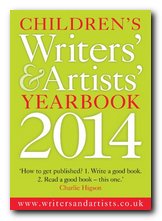sample from HTML program and PDF book
1. Capital letters in essays are always placed at the beginning of a sentence, and they are used for all proper nouns:
He slowly entered the room, accompanied by his friend James Bowman.
2. They are used when a particular thing is being named. For instance
| days | Wednesday, Friday |
| places | East Anglia |
| rivers | the river Mersey |
| buildings | the Tate Gallery |
| institutions | the Catholic Church |
| firms | British Aerospace |
| organisations | the National Trust |
| months | April, September |
3. However, when such terms are used as adjectives or in a general sense, no capital is required:
the King James Bible BUT a biblical reference
Manchester University BUT a university education
4. Capitals are used when describing intellectual movements or periods of history:
Freudian Platonism Cartesian
The Middle Ages the Reformation
5. They are also used in the titles of books, plays, films, newspapers, magazines, songs, and works of art in general. The normal convention is to capitalise the first word and any nouns or important terms. Smaller words such as and, of, and the are left uncapitalised:
A View from the Bridge
The Mayor of Casterbridge
North by Northwest
The Marriage of Figaro
6. The convention for presenting titles in French is to capitalise only the first or the first main word of a title:
A la recherche du temps perdu
La Force des choses
7. However, there are many exceptions to this convention:
Le Rouge et le Noir
Entre la Vie et la Mort
8. In German, all nouns are given capitals:
Reallexikon zur deutschen Kunstgeschichte
9. Works written in English which have foreign titles are normally
capitalised according to the English convention:
Fors Clavigera Religio Medici
10. Interesting exception! Capitals are not used for the seasons of the year:
autumn winter spring summer
© Roy Johnson 2003
Buy Writing Essays — eBook in PDF format
Buy Writing Essays 3.0 — eBook in HTML format
More on writing essays
More on How-To
More on writing skills

